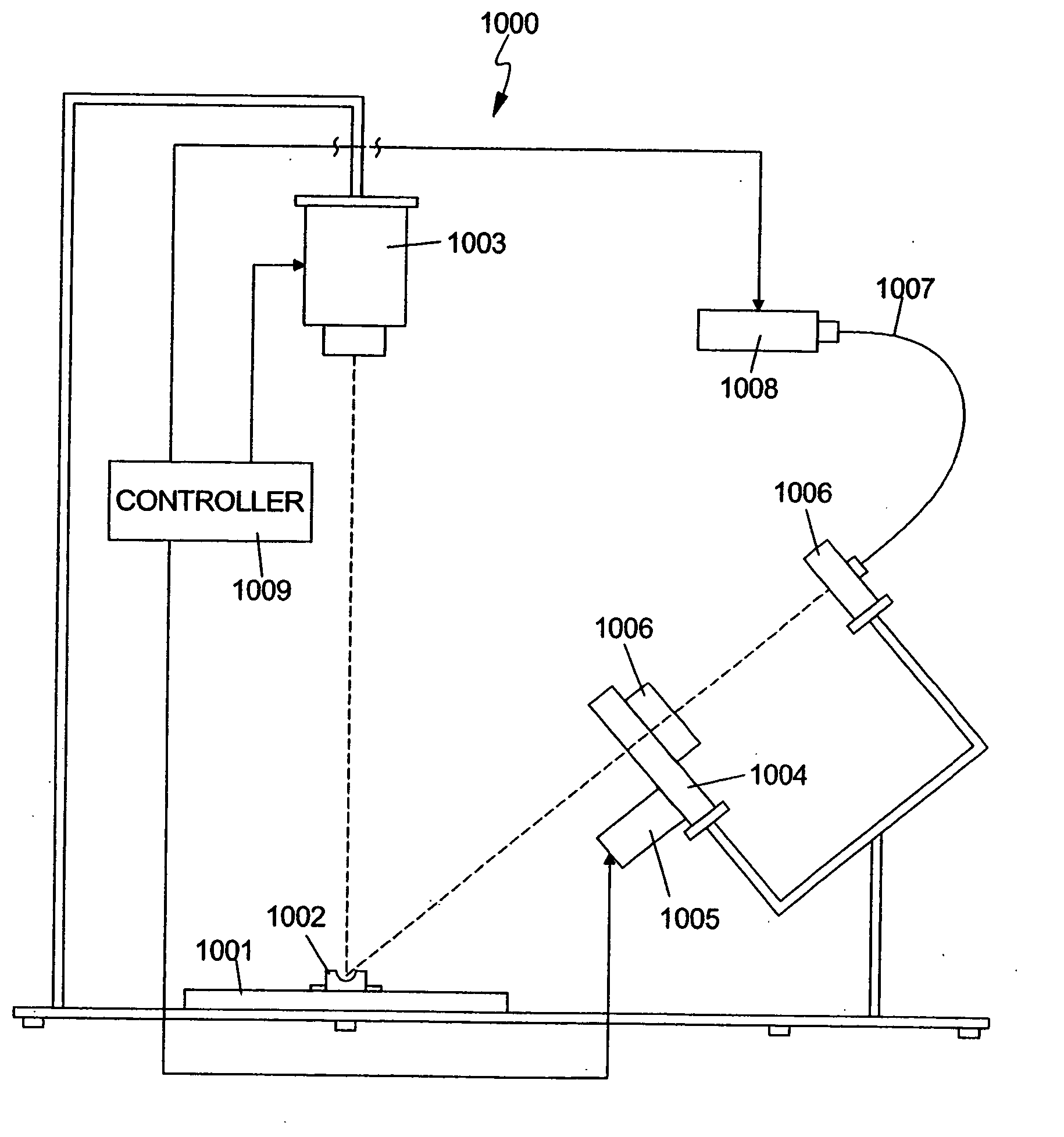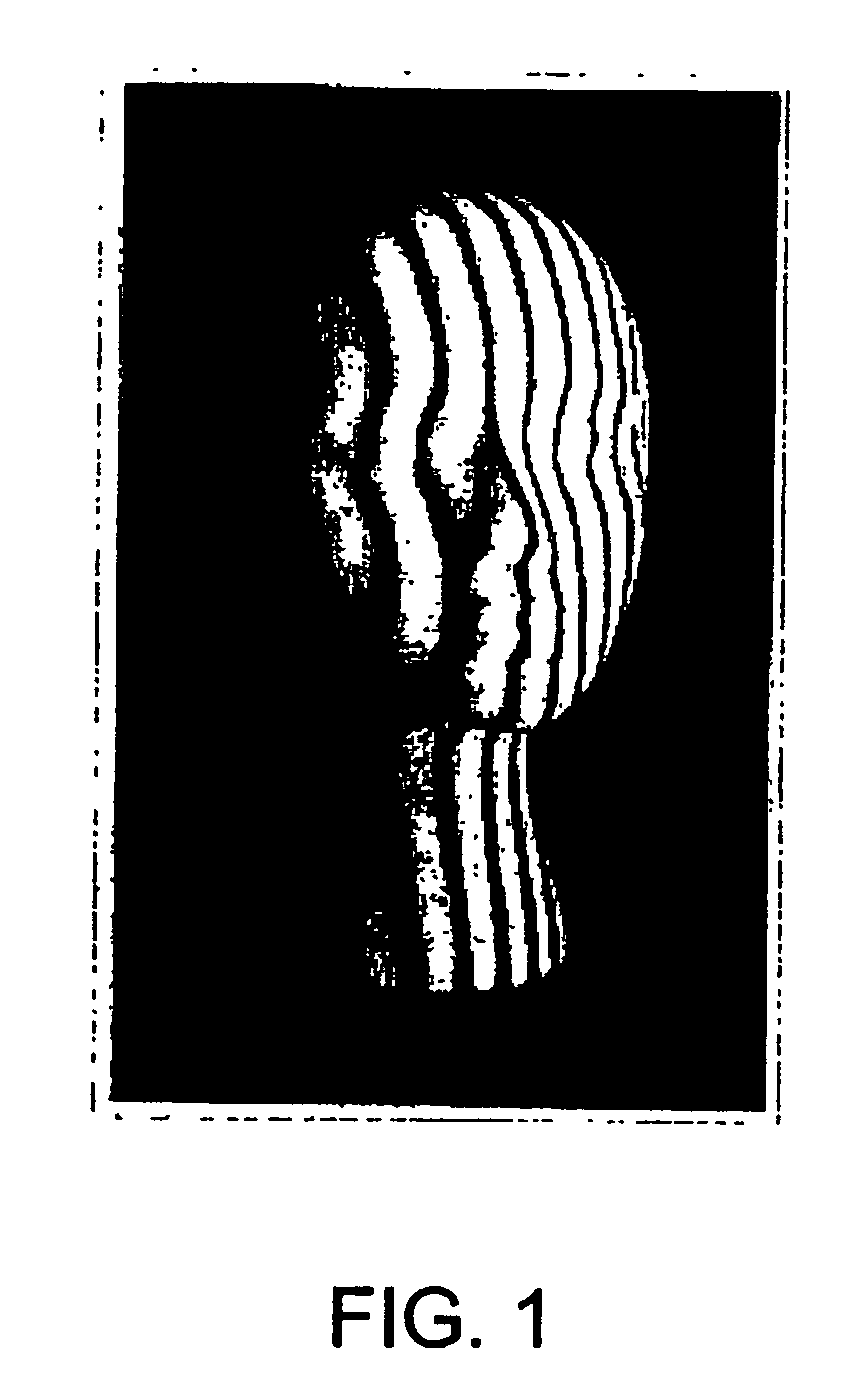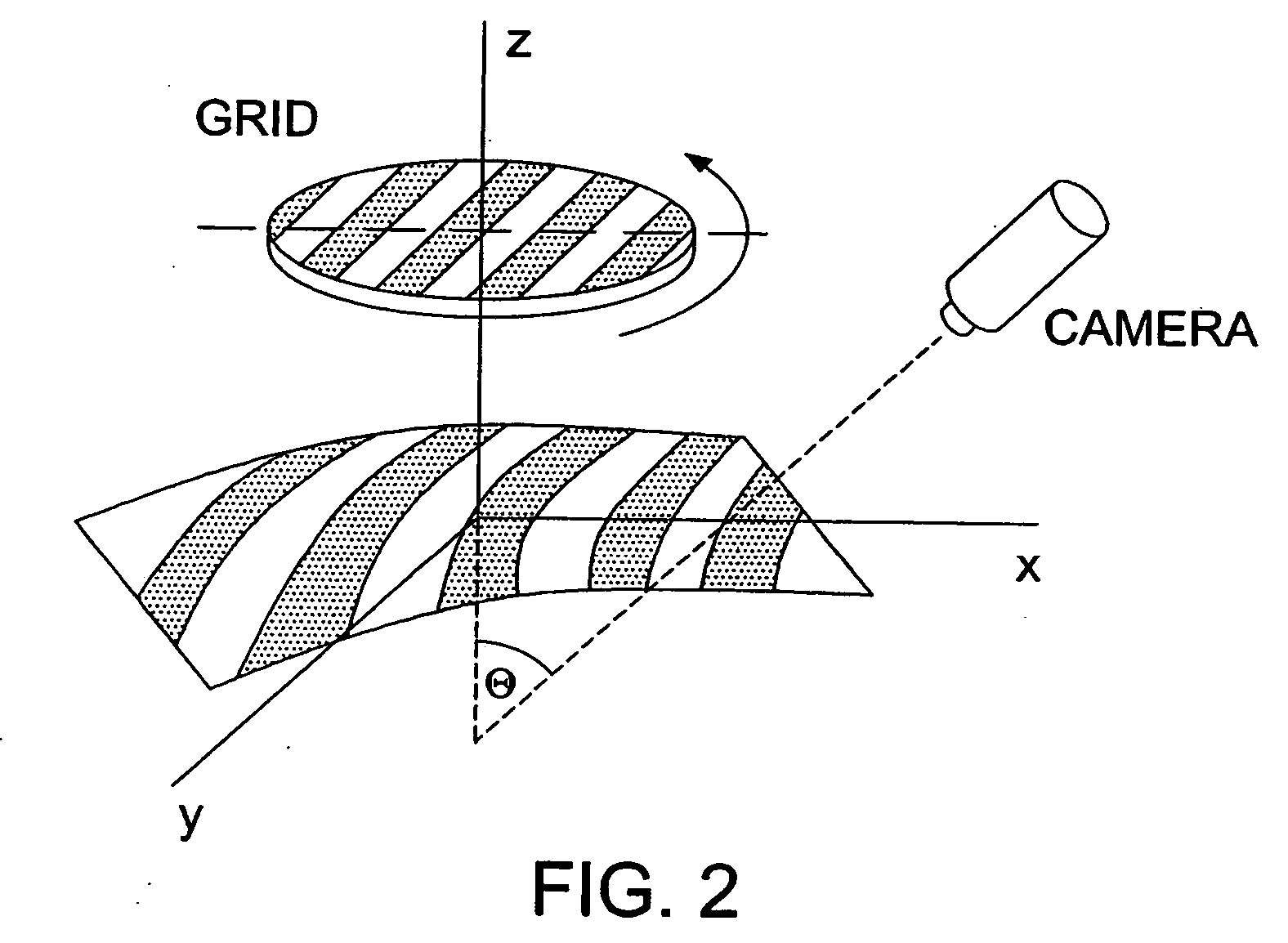Non-contact apparatus and method for measuring surface profile
a technology of surface profiles and non-contact devices, applied in the direction of image analysis, instruments, measurement devices, etc., can solve the problems of increasing data acquisition and analysis time, inability to accurately measure, and inability to contact the surface,
- Summary
- Abstract
- Description
- Claims
- Application Information
AI Technical Summary
Benefits of technology
Problems solved by technology
Method used
Image
Examples
Embodiment Construction
[0034] Embodiments of the invention generally provide a method and apparatus for projecting an optical pattern onto an object field having an object positioned within the object field, recording multiple electronic images of the pattern projected onto the surface of the object, and a mathematical procedure for uniquely determining the 3 dimensional coordinates of points on the surface of the object from the multiple images.
[0035]FIG. 3 illustrates an exemplary hardware configuration of an embodiment of the invention. The dynamic grid projection apparatus 300 of the present exemplary embodiment is generally configured to project an optical pattern onto an object field. Illumination from a point source of light 301 may be directed through an optical grating device 302, which may be a grid of a predetermined size and granularity rotating at a known velocity, and then onto a measured surface 308 by one or more projection optical lenses 305. The optical grating device 302 produces a rot...
PUM
 Login to View More
Login to View More Abstract
Description
Claims
Application Information
 Login to View More
Login to View More - R&D
- Intellectual Property
- Life Sciences
- Materials
- Tech Scout
- Unparalleled Data Quality
- Higher Quality Content
- 60% Fewer Hallucinations
Browse by: Latest US Patents, China's latest patents, Technical Efficacy Thesaurus, Application Domain, Technology Topic, Popular Technical Reports.
© 2025 PatSnap. All rights reserved.Legal|Privacy policy|Modern Slavery Act Transparency Statement|Sitemap|About US| Contact US: help@patsnap.com



